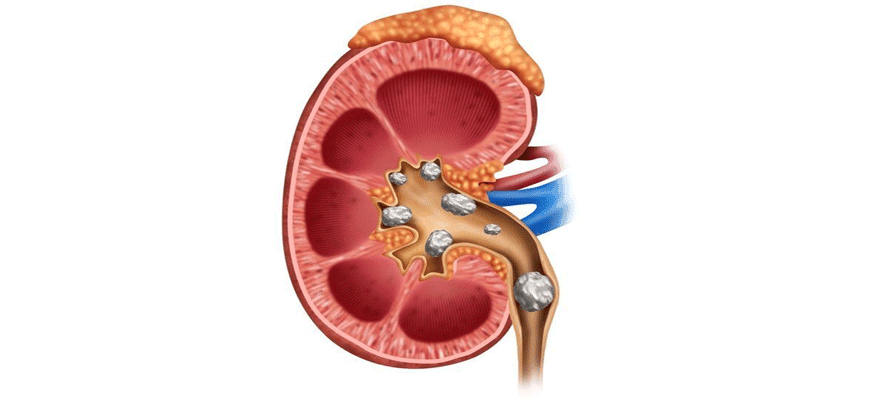The human body creates quite a few waste products day in and day out. One of the major examples of such a product is uric acid. This particular substance is a byproduct of the breakdown of chemicals such as purines found in red meat, seafood and liver. Other carriers of purine include dried beans, peas and both alcoholic and non-alcoholic beer. High uric acid is a condition from which innumerable people are suffering across the globe. This is why in this blog, we are going to try to spread awareness of the major causes and risks of high uric acid and how to treat and prevent it from resurfacing.
What are the causes of high uric acid?
Just like every other waste product, uric acid has a way of leaving the body. In most cases, once the uric acid is created, it gets dissolved in a person’s bloodstream. Next comes the work of the kidneys, which act as a filter. The kidneys process the blood, and the uric acid gets segregated and removed from the body via the urine.
When a person’s kidneys fail to filter the uric acid, it results in its accumulation within the body. This condition is referred to as hyperuricemia. Other factors that may cause the accumulation of uric acid and its slow removal are as follows:
- Purine rich diets, especially red meat, dried beans, peas, etc
- Certain types of mushrooms and fishes like sardines, anchovies, etc.
- Excessive alcohol consumption, especially beer.
- Gaining too much weight or Obesity.
- Genetics and family history
- High blood pressure and cholesterol
- Undergoing gastric bypass surgery
- Consuming water retention relievers such as diuretics.
Others causes
Cancer: Cancer is a disease which affects not one but several body functions at the same time. There are certain varieties of cancer and its related treatment which result in excessive release of cells into the bloodstream. This is also referred to as tumour lysis syndrome, which in turn elevates uric acid levels in the body. Owing to this reason, a close watch is kept on a cancer patient’s uric acid level while undergoing radiation or chemotherapy.
Kidney disease: One of the everlasting debates in the history of medicine is the relationship between uric acid and kidney disease. Some believers feel different types of kidney disease result in the organ’s malfunction, which in turn causes the failure to filter uric acid from the blood. While others are of the exact opposite opinion and feel that chronic hyperuricemia results in reduced renal functions.
What are the risks of high uric acid?
We have already discovered that an excess of uric acid in the body is referred to as hyperuricemia. Let us check out what are the major risks of such a condition.
- Kidney stones
When the uric acid fails to leave the body, it gets settled down and transformed into crystals of urate. When these small stones start to build up in the kidneys, they are referred to as kidney stones. A person with kidney stones can experience extreme pain and blood while urinating.
Symptoms of kidney stones:
- Nausea and vomiting
- Severe pain in the abdomen, groin, back and side
- Foul-smelling urine
- Increase rate of urination
- Gout
Another major risk of high levels of uric acid is gout. This particular form of arthritis affects a person’s joints such as knees, ankles, big toe, foot, wrist, hand, etc. The uric acid gets accumulated and transformed into small and sharp stones. An attack of gout pain may last up to 10 days; however, the first 36 hours are the most crucial and painful. Therefore, spending on the cost of the uric acid test can be quite helpful in preventing such occurrences.
Symptoms of gout:
- Feeling exhausted
- Inflammation, redness and stiffness of joints
- Severe pain in joints
What is the treatment process for high levels of uric acid?
- Diagnosis
The first step toward any medical treatment is getting tested as confirmation of the disease. The same goes for high uric acid. Doctors may prescribe a Serum Urate (SU) test to calculate the amount of waste product lingering in a patient’s blood. In this case, the lab assistant will collect a vile of your blood and send it for testing. The normal ranges are:
Normal Range
Male
2.5 mg/dl – 7.0 mg/dl
Female
1.5 mg/dl – 6.0 mg/dl
In chronic cases where the crystallisation of uric acid has already occurred, medical experts may even order an ultrasound or X-Ray or PET-CT Scan. This helps to confirm the presence of kidney stones and the development of gout.
- Uric acid test price
Elevated uric acid is a quite common health condition. This is why attempts are made by pathology labs to keep the price of uric acid tests to a minimum. Keeping in mind factors like collection type, diagnostic centre, city, etc., the cost of a uric acid test lies in the range of INR 100 to 150.
- Treatment and prevention
As a high level of uric acid is not a deadly disease in itself, it can be brought under wraps. Doctors may prescribe medicines and a strict diet to control the rise. Moreover, through urate-lowering therapy, patients can easily prevent the condition from resurfacing. Following are some of the related do’s and don’ts.
Do’s
- Take non-steroidal anti-inflammatory medications like ibuprofen
- Consult doctors for Allopurinol to lower uric acid production
- Drink water at regular intervals
- Increase the rate of drinking coffee to at least 3 cups a day
- Eat more and more cherries
- Exercise regularly to keep a check on weight, cholesterol and blood pressure
Don’ts
- Avoid consumption of alcoholic drinks
- Try to reduce your intake of sugary drinks like soda, sweetened juice and soft drink
- Limit the consumption of dairy products and poultry
Conclusion
Suffering from high uric acid may seem harmless at first and can even be asymptomatic for many. Nevertheless, one should always consult a doctor to find out the underlying reason and to determine the best course of treatment.








